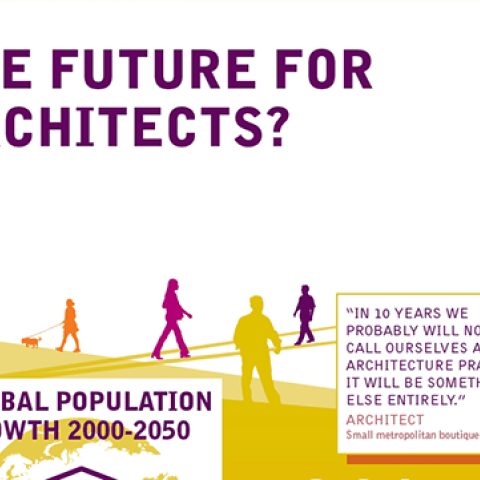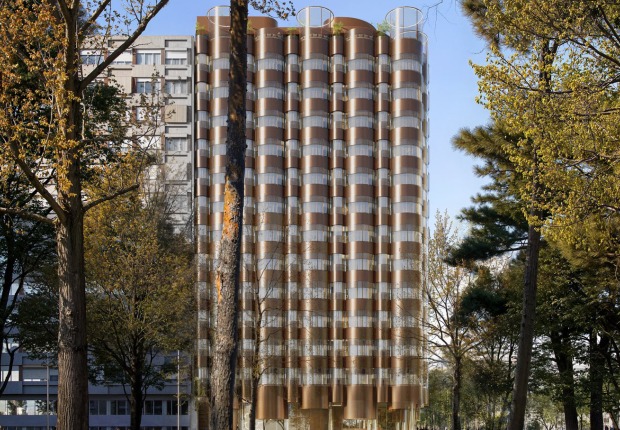Our global economy and the economic recession have effected our business practices and the RIBA has taken a look at how these factors have transformed our profession and what trends we may see continuing in the future. The survey suggests that not only will architecture firms have to focus on a financial and business approach rather than predominantly design-led offices, but also company names are predicted to drop ‘architect’ altogether and insert ‘spatial agencies’ and ‘design houses’.
 Courtesy of RIBA.
Courtesy of RIBA.
In the course of this study we have learned that there are many different views about the future for architects. It has not been feasible to consolidate them into a single readily digestible picture, nor did we expect to. However we have tried to tease out what trends are likely to be most influential, to place them in a wider global context, and to consider what this means for the industry as it is currently structured. It will have been a worthwhile exercise if it stimulates those who are embarking on a career in architecture, as well as others who have previously done so, to reflect on how rapidly the context in which they work is changing, and the need to be proactive in responding to it if they are to optimise their contribution.
 Courtesy of RIBA.
Courtesy of RIBA.
“In order to compete against the cheaper workforces from the emerging markets and the financially savvy mega consultancies, the architect must learn to speak the language of the client particularly to become financially literate. In addition to financial literacy, the client-savvy architect must be able to see beyond ‘building a building’ and offer a service that embraces the client’s broader aims – becoming a problem solver as well as a designer.”
Even more concerning is the projected shift in size of an architecture firm, multi-disciplinary mega practices are the anticipated new norm. The medium-sized 50-120 employee firms based mainly in London are at high risk to be squeezed on fees and acquired by larger firms becoming extinct to the profession altogether.
Parts of the industry that could remain relatively stable according to RIBA are the small local general practice, the international star architects, specialist niche practices, and the traditional regional delivery driven practice.
“A number of practices we interviewed were planning to formalize the diverse services that they offer,” said the report, “too many architects were carrying out pre-project work for free, claiming this would never happen in any other profession.”
The demand for architect services within the UK has continued to decline, suffering a 40% reduction since 2008, and the survey also predicts architects will be forced to branch out to other areas of the construction industry. The report added, “the RIBA would then have to redefine what an architect does in order to fit better with the 21st century reality of the profession.”
Interviewing architects as well as engineers, builders, and students the RIBA survey also suggests that UK designers should anticipate new competition. Foreign architecture firms from both Asia and the Far East, as well as luxury fashion houses such as Gucci could possibly flood the market in the coming years creating difficulty for existing architecture practices.
“An architect needs, as a matter of urgency, to be able to sell their skills with reference to cost to be of use to the client. The profession must face up to the reality that the context within which it now practices has changed so dramatically that the skill set required must also shift – financial skills should now be considered core.”
Although the results of the survey are a bit daunting, there is an evident opportunity to actively participate in shaping the development of the profession.”


















